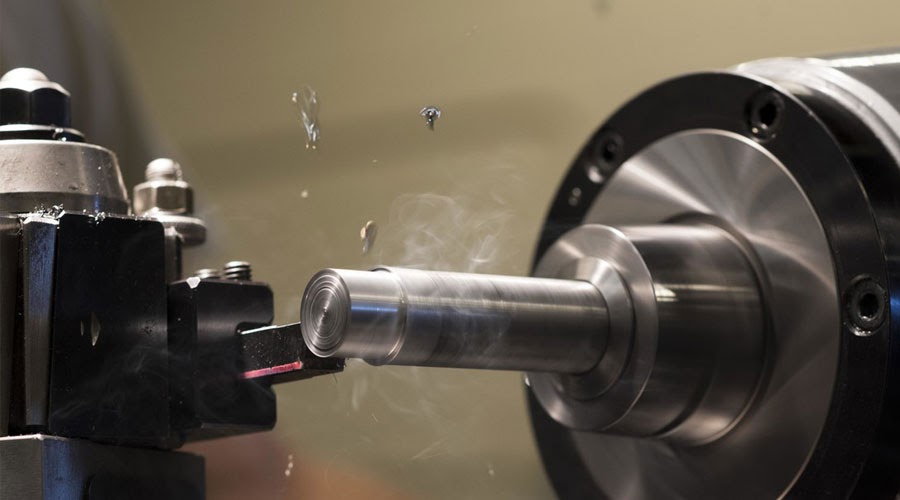Purchasing a tabletop CNC mill can be an exciting prospect. After all, it unlocks a world of possibilities and opportunities for your workshop and beyond. In addition to expanding your capabilities, it also introduces other benefits such as automation, greater productivity, and reduced wastage.
However, your equipment and tools are only as good as you maintain them. And if you fail to maintain, you will be in pain.
To avoid such a situation, make preventive and proactive maintenance a regular habit rather than waiting to take action after the breakdown of your metalworking CNC mill or its tools. Wondering how you can make it happen? Here are 7 tips that can lead the way:
1. Read the User Manual
Unfortunately, the user manual is one of the most underrated and unappreciated elements that come with your metalworking equipment. After all, who wants to get reading when you have a sparkling new machine ready to slice through metals?
However, a user manual can effectively answer all the queries you may have regarding the operation, maintenance, and handling of your metalworking equipment. It can often help you troubleshoot minor hiccups that you experience while using the machinery and recommend the best practices to keep it operational to deliver optimum performance. So make it a point that you and the machine operator go through the user manual right off the bat.
2. Check Lubrication Frequently
It is no rocket science – parts and components of your machines move to deliver the desired effect, and hence, it will require an adequate amount of lubrication to function smoothly. The lack of lube can cause friction to develop between these moving parts and cause it to experience heating and wear and tear.
Check the lubrication levels of your metalworking machine, especially when you use it frequently. Ideally, make it a weekly practice to grease and oil the moving components and top off the lubricant. Your machine’s user manual may contain the name of the preferred lubricant as recommended by the manufacturer.
3. Inspect Alignment
When you are working on metal, alignment is everything. Misalignment can not only cause wastage of raw materials or pose a fatal threat to the operator, but it can also affect the quality and the performance of your machine. Hence, run a few test jobs before you start working on the actual metal feeds to visualize the final results.
In case the alignment seems off, involve a professional to realign the machine for maintaining specification accuracy.
4. Clean Your Machine Regularly

Although it may seem pretty obvious, it needs to be said – clean your machine. And do it often!
The waste produced during metalworking will only take up unnecessary table space, or the grime will reduce the efficiency of the lubricating action of grease – the lack of cleanliness can hamper work in several ways. So, clean your equipment as regularly as possible as it will deliver better performance. Follow a regular cleaning schedule daily or weekly, and you will notice that your machines are operating at maximum capacity.
5. Sharpen the Milling Tools
If your CNC mill uses tools for cutting, slicing, drilling, scoring, chopping, or sharpening metals, you will have to ensure that your tools are up to the task. Achieve this by sharpening the important elements of the machine, such as the drill bits, precision cutters, saws, end mills, and other lathe tools.
Dull or blunt tools will only trade the overall efficiency of your equipment and do more harm than good. Along with the usual wear and tear, blunt tools will also compromise the quality of your end products. As a result, the shape, size, or specifications may be way off than what you are aiming for.
6. Check for Signs of Wear and Tear
Typically, machines don’t break down overnight. In most situations, it indicates the impending signs of a breakdown in the form of worn-out belts, overheating, cracked gaskets, machine vibrations, alignment issues, or clear damage. When left unrepaired, these minor issues can avalanche into serious problems that can jeopardize life and limb.
Teach your machine operators to keep a vigilant eye out for signs of wear and tear and sign up for AMCs that can immediately deploy maintenance teams to mitigate its effects.
7. Train Your Machine Operators
Your machine operators are the greatest assets when it comes to maintaining your metalworking equipment properly. You can train them to inspect the machines before operating them and encourage them to follow the best practices while operating the metalworking lathe.
Update their knowledge periodically and share details on the latest and upcoming technologies. Empowering your staff and investing in their safety and well-being will reflect on your machinery and the overall performance of your workshop.
Concluding Thoughts
When we talk about maintaining your metalworking equipment, it is not just limited to the main machine alone. In fact, it extends to every tool and accessory that you use along with the machine. So treat it as a holistic ecosystem.
On a concluding note, make regular maintenance a priority to boost the performance of the machinery and amplify its associated benefits. Use the pointers above and add years to metalworking equipment!
Leave a Reply